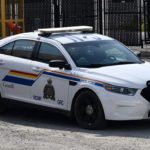Home »

Return to classrooms plans unveiled
The B.C. government this afternoon unveiled a back-to-school plan with students going back to classes on Sept. 10.
Back to school plans for K-12 families are now posted for all 60 school districts.
Please read School District No. 5 (Southeast Kootenay) Stage 2 restart plan.
Please read School District No. 6 (Rocky Mountain) Stage 2 restart plan.
“There is no better place than in-class learning. With these plans now in place, parents can feel confident about sending their children back to school and assured that strict health and safety measures are in place to protect students and staff,” said Rob Fleming, Minister of Education. “I know that some families will continue to have medical or health concerns, and my expectation is that school districts will be flexible and work with families to provide remote options that keep children connected to their school community.”
Fleming has directed school districts to contact all families in their school communities to share their safety plans and to confirm if they are planning for their child to attend school classes in September, or if they need alternative learning options. As part of the ministry’s July 29 guidelines for planning, many districts have already begun engaging with parents to determine their needs.
The Ministry of Education has also given school districts the flexibility and certainty to find options that work for families. This includes the authority for all school boards to offer remote options to students within their districts, as well as the tools they need to increase their existing programs to meet demand.
“Since the beginning of the pandemic, boards of education throughout B.C. have worked hard to make sure local community needs are met within the health and safety framework provided by the provincial health officer,” said Stephanie Higginson, president, British Columbia School Trustees Association. “Districts will continue to work with parents and families, as they have always done, to ensure children returning to school in September are able to do so safely.”
Parents will find detailed back to school plans on their district website. In addition to health and safety measures, the plans include:
* how learning groups will be organized;
* when masks are required;
* daily schedules for classes, lunch and recess;
* daily health assessment requirements;
* pick-up and drop off times;
* protocols for common areas;
* hand washing directions; and
* orientation information.
Each school district plan follows the same strict provincial health and safety measures co-developed with the provincial health officer, the BC Centre for Disease Control and the Ministry of Education. School districts are adapting their schedules and learning groups to fit within those measures based on student population and local consultation with education partners, parents and Indigenous rightsholders.
Every day, school districts are prepared to welcome all students to elementary and middle schools. For secondary schools, timetables have been modified to adhere to the health and safety requirements and ensure that all students can attend most days, with much of their instruction occurring in-class. The majority of school districts (68%) are moving to a quarterly semester system in some or all of their secondary schools.
While schools may look different in different communities, all school districts are also required to follow operational guidelines developed by a provincial steering committee made up of parents, teachers, support workers, Indigenous rightsholders, school leaders and trustees. School districts were also required to consult local First Nations on the development of their plans.
Families will find out:
* how districts will support mental health and wellness;
* what they are doing to ensure vulnerable students and those who require additional support in school – including students with disabilities and diverse abilities, and children and youth in care – are prioritized for full-time, in-class learning and services without delays;
* how they are ensuring Indigenous rightsholders are engaged in meaningful consultation; and
* plans for Indigenous students living on-reserve and attending public school.
“On behalf of parents, I thank the ministry, and specifically Minister Fleming, for stating his clear expectations that all school districts will provide online options for parents, while ensuring all children will have the opportunity to remain connected to their school community,” said Andrea Sinclair, president, BC Confederation of Parent Advisory Councils (BCCPAC). “This is the position BCCPAC has continuously been stating at the provincial tables since June. I thank Minister Fleming for his willingness to listen and to provide flexibility for families which is in the best interests of our children.”
The health and safety measures that all school districts will follow include:
* masks will be required for staff, middle and secondary students in high-traffic areas, such as buses, and in common areas, such as hallways, or anytime outside of their learning group whenever physical distancing cannot be maintained (exceptions will be made for students who cannot wear masks for medical reasons);
* even when wearing a mask, staff and students will still be required to maintain physical distance from people outside of their learning group;
* increased cleaning of high-contact surfaces, such as doorknobs, keyboards, desks and chairs;
* increased hand hygiene with all students, staff and visitors being required to clean their hands before boarding school buses and entering school buildings, before and after eating, using the washroom and using playground equipment;
* school districts may also install transparent barriers for people who have more contact with others, such as front-desk staff, bus drivers or food services staff, where appropriate; and
* staff and students (or their parents/guardians) must also assess themselves daily for illness, including symptoms of COVID-19. If any student or staff member has even mild symptoms, arrangements will be made for that person to return home.
The Ministry of Education has developed a five-stage approach to operate schools, depending on risk of transmission and guidance from the provincial health officer. This helps school districts know what to expect if there is a significant change to school operations required as part of B.C.’s response to the COVID-19 pandemic.
Operational plans for independent schools will be reviewed by the ministry by the end of this week. Those plans will be posted on school websites early next week.
To support and ensure the health and safety of students and staff during this pandemic, a one-time investment of $45.6 million as part of B.C.’s COVID-19 Action Plan will support school districts and independent schools for the start of the school year. This funding will support the purchase of up to 1.5 million masks, enough for every public-school staff member and student to have at least two masks.
Canadian Shield, a manufacturer of personal protective equipment products in Ontario, recently announced it is donating an additional 54,500 face shields for K-12 schools in B.C., adding to the inventory of personal protective equipment that will be available for students and staff.
Alternate learning supports for K-12 schools
The province is providing a range of supports for remote learning for school districts, teachers and parents.
School districts
* Extended the authority to all school boards to offer online programs to students within their districts.
* Gave districts the ability to expand their local distributed learning programs to include additional grades and services to students and district schools to meet local needs.
* Provided a provincial learning management system (MOODLE) for districts to support online learning.
* Upgraded internet access to all schools in the province through the K-12 Next Generation Network.
* Provided a provincial license for Zoom for all schools as a secure platform for real-time videoconferencing.
Parents and caregivers
* Provided $3 million through the Safe Return to Schools Grant to loan technology to students (such as tablets or laptops) to support their educational program.
* Enhanced the Keep Learning Website with additional resources for parents. This is a central place where families can find ideas for everyday educational activities, links to free learning resources, as well as how to help children learn and how to ensure their well-being while they are at home.
* Worked with telecom and internet service providers to ensure families and school districts were provided with information about access to internet assistance and connectivity programs (such as Internet for Good).
Teachers
* Created an online repository of over 2,000 curated learning resources for use by teachers and staff to support the new curriculum, suitable for use online or in class.
* Provided funding for teachers to develop additional resources for this fall, through a partnership with the not-for-profit organization FocusED.
* Worked with the Western Canadian Learning Network, a school district consortium, to provide a full set of course resources for grades 4-12 for teachers using MOODLE.
* Funded a provincial site license for Zoom to ensure a common, consistent platform to communicate and share lessons with their students.
* Provided a new self-paced course with strategies for incorporating remote and in-person learning in the classroom.
* Launched a webinar series hosted by experts to support teachers throughout the province about changing their teaching or learning environments. The first webinar, Building Compassionate Communities in the Classroom, is scheduled for Sept. 9.
Homebound program
* During a regular school year, districts also accommodate students that cannot attend in-class instruction through the long-standing B.C. Homebound Program. This enables students to continue their education program if they are absent from school for periods during the school year because of medical reasons, such as injury, illness, surgery, pregnancy, or mental health reasons.
* Those with special needs or anyone who requires extra support at school will have full-time access to in-person classes. Children and youth in care will have priority access to technology, child care, in-class instruction and additional supports.
* The district has had extensive consultation with local First Nations, including N’quatqua, Lil’wat, Samahquam and Squamish Nation. First Nations students will be accommodated for remote learning when requested.
* Staff will be provided with digital professional development and training, in case a school needs to switch stages because of an increased risk of transmission.
e-KNOW







